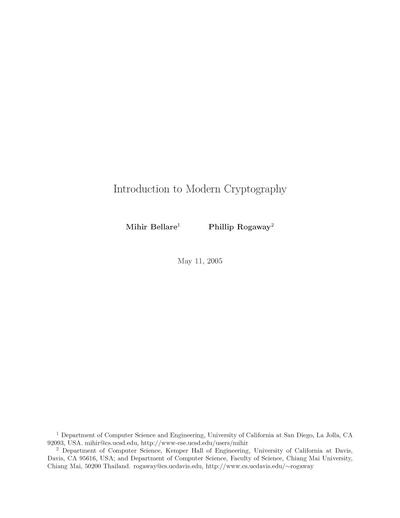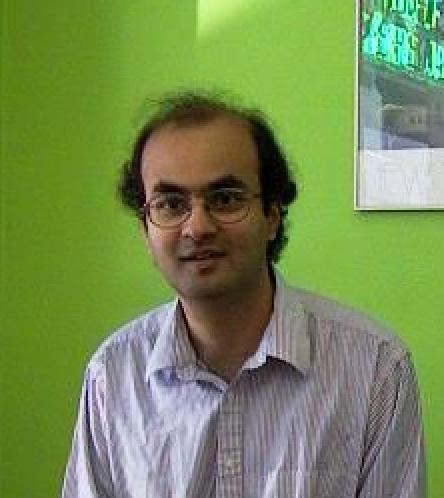
Introduction to Modern Cryptography
This document focuses on modern cryptography as a science. Includes topics on block ciphers, pseudorandom, symmetric and asymmetric encryption, hash, authentication and digital signatures.
Tag(s): Cryptography
Publication date: 11 May 2005
ISBN-10: n/a
ISBN-13: n/a
Paperback: 283 pages
Views: 30,204
Type: Lecture Notes
Publisher: n/a
License: n/a
Post time: 23 Sep 2006 06:28:21
Introduction to Modern Cryptography
 This document focuses on modern cryptography as a science. Includes topics on block ciphers, pseudorandom, symmetric and asymmetric encryption, hash, authentication and digital signatures.
This document focuses on modern cryptography as a science. Includes topics on block ciphers, pseudorandom, symmetric and asymmetric encryption, hash, authentication and digital signatures.
Publication date: 11 May 2005
ISBN-10: n/a
ISBN-13: n/a
Paperback: 283 pages
Views: 30,204
Document Type: Lecture Notes
Publisher: n/a
License: n/a
Post time: 23 Sep 2006 06:28:21
This document functions as notes for course CSE 207: Modern Cryptography at Computer Science and Engineering, University of California.
This course is an introduction to modern cryptography as a science. The viewpoint in this course is "theory brought to practice", specifically the application of the theory of "provable-security" to the design and analysis of real world cryptographic schemes. This course considers tasks like encryption, signatures, authentication, and key distribution. The goal is to instill understanding of fundamentals of cryptographic protocol design.
Although the aim is to end up with practical solutions, the work involved is largely theoretical. This document will spend much of its time understanding how to formally define and model various goals, and prove correct protocols for these goals. This document is not about computer security. It will not be covering topics like operating systems security, viruses, and worms.
Intended Audience:
This document assumes that readers are familiar with computer algorithms, probability theory, randomized algorithms, some basic complexity theory (eg. P, NP, NP-completeness, reducibility between problems) and, most importantly, own general "mathematical maturity." The latter means being comfortable with mathematical definitions and proofs.
Tweet
About The Author(s)
Mihir Bellare is a Professor in the Department of Computer Science and Engineering at the University of California, San Diego.

Mihir Bellare is a Professor in the Department of Computer Science and Engineering at the University of California, San Diego.
Phillip Rogaway is a professor in the Department of Computer Science at the University of California, Davis, USA. He has also been a frequent visitor to Chiang Mai University, and to other universities in Thailand. His research is in cryptography. He did his Ph.D. at MIT’s Theory of Computation group (1991), worked at IBM for some time, then came to UCD (1994). His research has focused on obtaining provably-good solutions to protocol problems of genuine utility. He is also interested in social and ethical issues connected to technology.

Phillip Rogaway is a professor in the Department of Computer Science at the University of California, Davis, USA. He has also been a frequent visitor to Chiang Mai University, and to other universities in Thailand. His research is in cryptography. He did his Ph.D. at MIT’s Theory of Computation group (1991), worked at IBM for some time, then came to UCD (1994). His research has focused on obtaining provably-good solutions to protocol problems of genuine utility. He is also interested in social and ethical issues connected to technology.